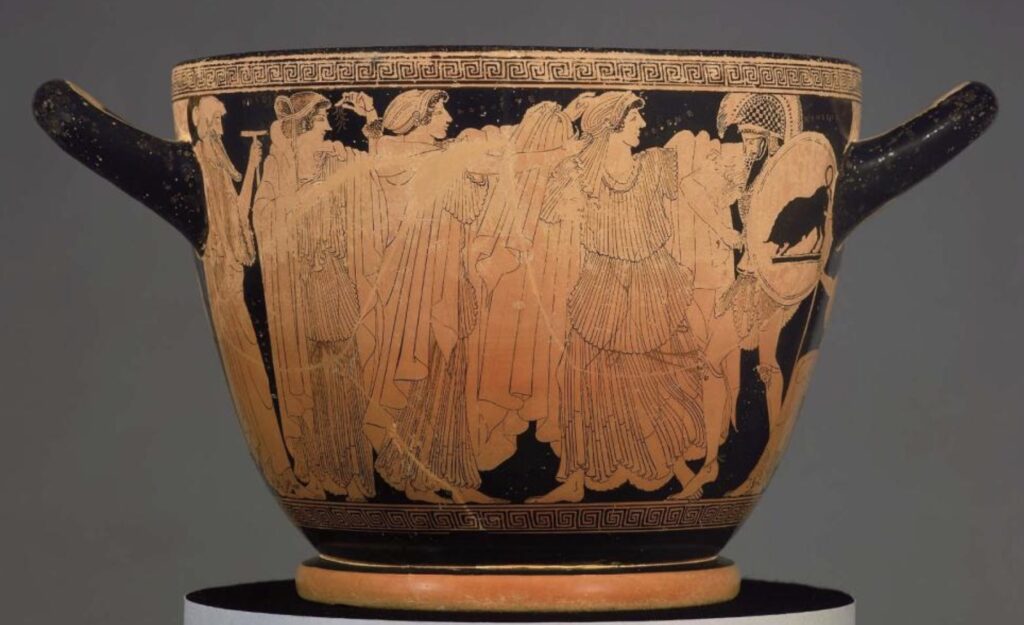Genius both in technical mastery and narrative flair, this big skyphos at the Boston Museum of Fine Arts is a stunner and shows Makron, the best of the fifth century Athenian cup painters, at the top of his game. The choice of vase shape is unusual for the Makron (normally he went for the elegant, shallow kylix, and was a master of a Dionysian and party scenes) but with the nearly vertical walls provided a brilliant ‘canvas’ for his complex illustration: the pivotal opening and closing events of the Iliad both featuring Helen.


Helen, formerly of Sparta, and more famously of Troy (and hatched from one of the eggs resulting from the union of Leda and Zeus..see previous post!) caught the eye of the younger Trojan prince, who spirited her away from her home and her domineering husband Menelaos, and took her to Troy as his bride: an outrage, and the impetus for the Trojan War. This is the scene on one side, in the format if a wedding scene, with veiled Helen led by one wrist by Paris. Between them Eros flutters around, and behind Aphrodite and Peitho (persuasion).

That impenetrable city was eventually sacked by the Greeks and (the least satisfying end to a grand romance ever) beautiful Helen was ‘recovered’ by her vengeful ex-husband. And that is what is shown on the opposite side: Menelaos (that brute…still wearing his armour and as aggressive as the charging bull on his shield) confronts Helen who (defenceless in a nearly see-through dress…) as she takes refuge in the Sanctuary of Apollo with the other Trojan woman. The composition is a parallel to the wedding imagery on the other side, and following up the unhappy couple are Aphrodite, who seems to exhort her forward, Kriseis and Kriseus (her Trojan attendants). Priam sits despondent beneath a handle.
Compositionally, the very different scenes are striking and intentional pendants, and their juxtaposition is unusual. And despite the presence of interfering Aphrodite, intentionally bittersweet.




